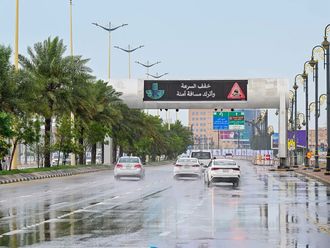Manila: China has recently built several structures on five reefs found within the Philippine-claimed eight-island chain on Spratly Archipelago off South China Sea, a local paper said.
The report added that the newly-found structures raised to six, the number of reefs that China had overtaken on Philippine territory within the contested area.
China's new structures were built at Kagitingan Reef (also known as Fiery Cross); Calderon Reef (or Cuarteron); Gaven Reef; Zamora Reef (or Subi); and Chigua Reef (or Dong Men Jiao) Reef, all of which were found within the eight Kalayaan-island Group (KIG) that the Philippines has claimed and had annexed as part of Palawan province in the southwestern Philippines, the Philippine Star said.
Command headquarters
At the Kagitingan Reef, China has built a main command headquarters, a two-storey barracks that could contain 200 troops. It has a helicopter landing pad; a 300m wharf for ships and patrol boats; a 500-square metre plantation area; four naval guns; gun emplacement; satellite data transmission, surface and air search radars.
At the Calderon, Gaven and Chigua reefs, China has built supply platforms with wind resistance up to 71 knots; docks for patrol boats; naval and anti aircraft guns; search radars; and VHF/UHF communications equipment.
At the Zamora Reef, China's structure can house 160 troops; equipped with helipad and four twin barrel 37-millimeter naval guns.
Six reefs
The presence of these structures raised to six reefs which China had occupied within the Kalayaan-Island Group (KIG) on Spratlys.
In 1995, Philippine authorities found that China had started to build facilities at Panganiban Reef, known as Mischief Shoal. At the time, China claimed that developments at Panganiban or Mischief Reef were for fishermen seeking shelter from rough seas. In a diplomatic complaint, Manila said that the shelters had satellite communications and radars.
Since then, China had built on Panganiban Reef three multi-storey buildings which serve as stations for 50 Chinese Marines.
In all, the Philippine-claimed KIG has 54 islands, reefs, and shoals, with a total area of 64,000 square mile located within Spratly Archipelago's 200 islands with a total area of 150,000 square miles. The country's claim on KIG was based on the Philippine's 200 nautical mile exclusive economic zone.
China's other projects on Spratlys included lighthouses, navigation buoys, ocean observatories and maritime meteorology networks.
All these developments were "apparently aimed at establishing pre-positioned bases in the South China Sea, enabling Beijing to project its influence and power in the disputed islands," said the Star.
China has occupied islets in the Spratlys
Apart from the six Philippine-claimed reefs where China had put structures on, China has already occupied seven islets on the Spratlys.
The Philippine-claimed KIG, also known as Thi Tu Island, is the second biggest island on Spratlys. In comparison with China's development, the Philippines has built a small airstrip and deployed a small community on Pagasa Island; and garrisons in other eight islets.
Other claimant like Vietnam has occupied 23 islets, and Malaysia, seven islets on the contested archipelago.
China, Taiwan, and Vietnam claim all of the South China Sea, including the Spratly Archipelago. The Philippines, Malaysia, and Brunei claim some parts of the Spratly Archipelago.
In a meeting with China's defence chief on Monday, President Benigno Aquino said he will push for joint economic development in the contested areas and diplomatic solutions to overlapping disputes.
"The proposal of the President was for claimant countries to come up with some sort of consortium, put up their resources for a particular project, and divide the proceeds of the project," explained Philippine defense chef Voltaire Gazmin.
Right conduct
But Manila has been called to exert pressure on China to observe "right conduct" on the Spratly Archipelago.
Last April, two foreign jets flew on the airspace of the Philippine-claimed island on the Spratlys.
Last March, Manila filed a diplomatic protest over the alleged intrusion of Chinese Navy patrol boats that harassed MV Veritas Voyager, a Philippine oil exploration ship, at the Spratly Archipelago.












